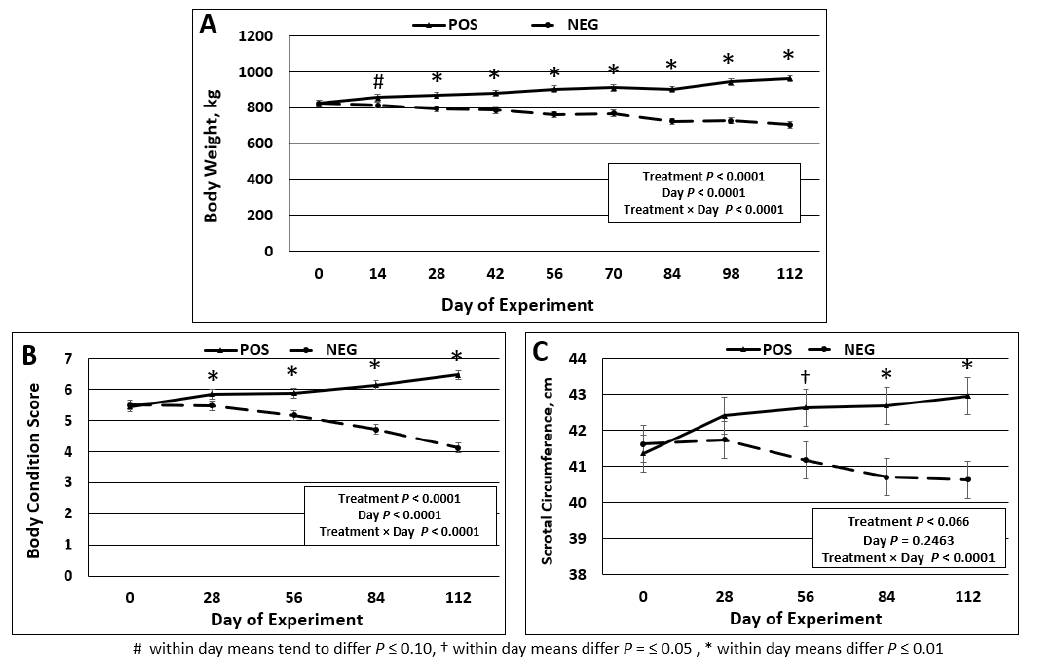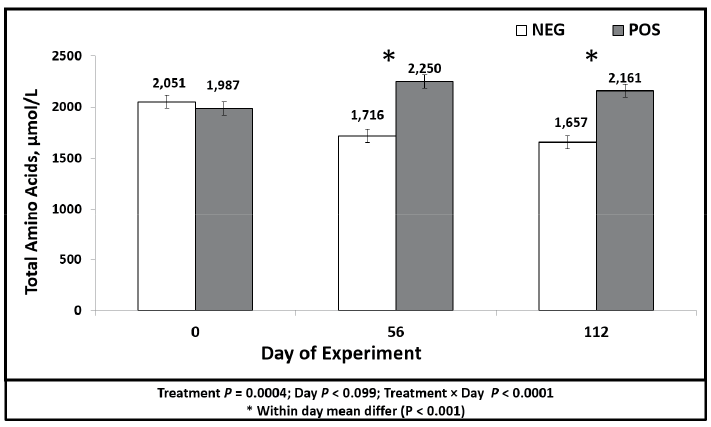All procedures were approved by the North Dakota State Institution for Animal Care and Use Committee.
Fifteen mature beef bulls (4 and 5 years old; BW = 1,816 ± 38.3 lb) were used in each of two years to evaluate effects of divergent planes of nutrition on body composition and concentrations of hormones and metabolites. In Year 1 bulls were ranked by BW and randomly assigned to one of two treatments for a 112-d evaluation period; 1) managed on a positive plane of nutrition (POS), or 2) managed on a negative plane of nutrition (NEG). In Year 2 bulls were assigned to the opposite treatment they received in Year 1 (i.e. POS in Year 1 were assigned to NEG in Year 2, and vice versa). In each year bulls were fed a common diet containing corn silage, triticale hay, cracked corn, dried distiller’s grains plus solubles, and a vitamin/mineral premix (Table 1). Diets were placed in Insentec feeders with deliveries adjusted based on biweekly body weight to achieve targeted weight loss or gain (~12.5% of original BW). Scrotal circumference and body condition score were determined every 28 days.
Table 1. Dietary ingredients and nutrient profile of diet fed to bulls on divergent planes of nutrition
| Item |
Percent in diet |
| Ingredient, % |
%, DM Basis |
| Corn silage |
44.6 |
| Triticale hay |
27.4 |
| Cracked corn |
8.0 |
| DDGS |
15.6 |
| Premix |
4.4 |
| Nutrient Composition |
|
| Ash, % |
9.16 |
| Crude Protein, % |
12.32 |
| ADF, % |
27.34 |
| NDF, % |
49.96 |
| Fat, % |
2.91 |
| Ca, % |
0.56 |
| P, % |
0.39 |
Blood samples were collected on d 0, 56, and 112 from the tail vein. Samples were allowed to clot for 30 minutes and centrifuged at 1,500 × g at 4 C for 20 minutes. Serum samples were separated and stored in plastic vials at -20°C until further analysis. Samples were analyzed using the Synergy H1 Microplate Reader (Biotek, Winooski, VT) with the Infinity Glucose Hexokinase Kit (Thermo Scientific, Waltham, MA) and NEFA-C Kit (WAKO Chemicals, Inc., Richmond, VA). Serum samples were analyzed for concentrations of testosterone (T), triiodothyronine (T3), thyroxine (T4), and insulin-like growth factor-1 (IGF-1) by competitive chemiluminescent immunoassay using the Immulite 1000 (Siemens, Los Angeles, Calif.). Concentrations of total amino acids were determined in serum samples from Year 1 only using the ACQUITY Ultra-Performance Liquid Chromatography System (Waters Corporation, Milford, Mass.).
Data were analyzed using the MIXED procedures of SAS for effects of treatment, collection day, year, and their respective interactions with bull as the experimental unit. Differences were considered significant at a P ≤ 0.05.


